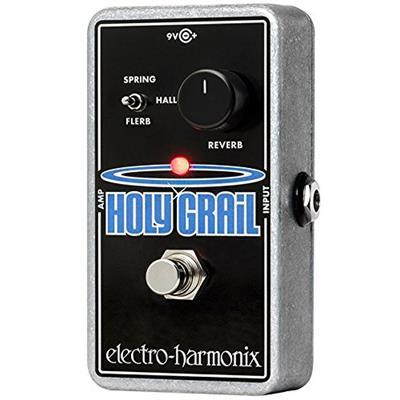 Octave is not the easiest effect to work with. It can be quite a headache to nail it and find that perfect sound. It is like cooking…you add too much of it and everything is ruined, you add too little and something is lacking. This is especially true for bassists, too many octaves down and your sound disappears, too many octaves up and your bass is not a bass anymore.
Octave is not the easiest effect to work with. It can be quite a headache to nail it and find that perfect sound. It is like cooking…you add too much of it and everything is ruined, you add too little and something is lacking. This is especially true for bassists, too many octaves down and your sound disappears, too many octaves up and your bass is not a bass anymore.
However, the best bass octave pedal might make it all easier for you. It can combine simplicity with the quality performance and give you mind-blowing results in the end. It might even offer several effects, which will give you a great deal of versatility and take your sound to a whole new level. One way or another, you have to own this unit to see for yourself what it does. This article will list down the best bass octave pedals on the market and give you some background information on how to make the most of this amazing effect. If you are interested, just keep on reading!
What’s The Best Bass Octave Pedal
| Image | Amplifier Model | ||
|---|---|---|---|
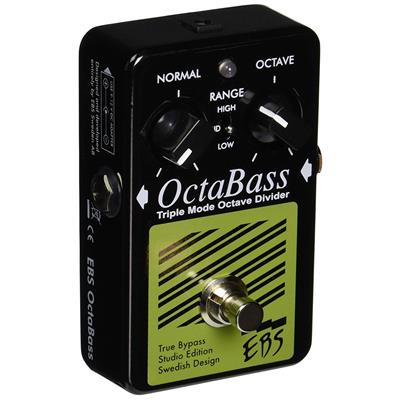 | EBS Sweden AB SE-OC Bass Octave Pedal |  (5 / 5) (5 / 5) | Check on Amazon |
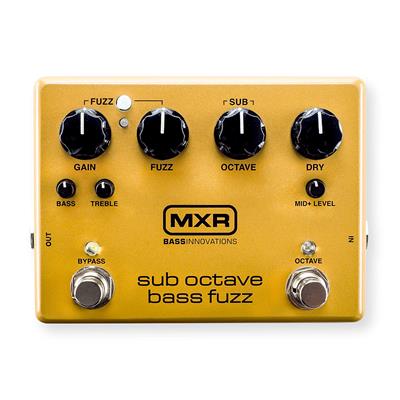 | MXR M287 Sub Octave Bass Pedal |  (5 / 5) (5 / 5) | Check on Amazon |
 | BOSS Oc-5 Octave Bass Effect Pedal |  (4.9 / 5) (4.9 / 5) | Check on Amazon |
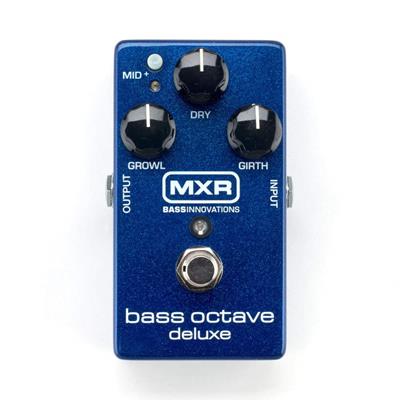 | MXR M288 Bass Octave Pedal Deluxe |  (4.8 / 5) (4.8 / 5) | Check on Amazon |
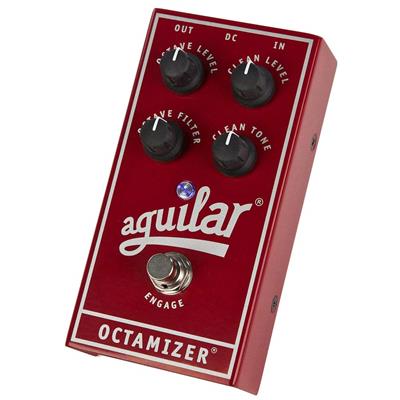 | Aguilar Octamizer Bass Octave Pedal |  (4.8 / 5) (4.8 / 5) | Check on Amazon |
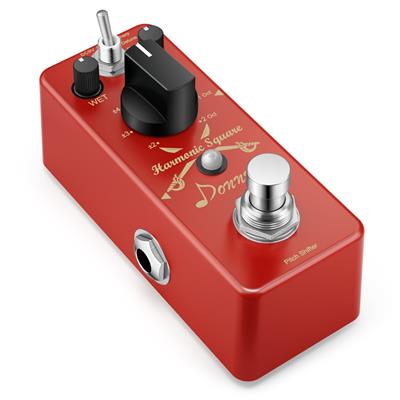 | Donner Digital Octave Pedal Harmonic Square |  (4.6 / 5) (4.6 / 5) | Check on Amazon |
EBS Sweden AB SE-OC Bass Octave Pedal

EBS has come out with a pedal that is featured in a robust, solid package. One look at OctaBass is enough to realize the durability of this product. This unit is very simple and can be controlled using two knobs and a toggle switch. Normal and Octave pots allow you to set the level of the original and affected signals, blend them together and tailor your sound meticulously. The toggle switch shifts between High, Mid and Low modes. The first one attenuates the higher frequencies, the second one gives you the sound of classic octave divider, while the third one accentuates the bottom-end and allows you to go even lower. The best part about the OctaBass is that it can track several notes and chords simultaneously and emphasize the root note. It enables the players to maintain the original sound of their bass while adding the octave effect on top. This pedal offers a killer performance that will be difficult to say no to. If I were you, I would grab it right away.
Pros:
- True bypass
- Reliable
- Works perfectly with bass
- Wide range of sound
Cons:
- Can go crazy easily
- The battery compartment is not easily accessible
MXR M287 Sub Octave Bass Pedal

Dunlop has always been renowned for its quality products, which are featured in metal chassis and promise to be durable. MXR M287 Sub Octave Bass Fuzz is no exception to that rule. It is a robust pedal with a sturdy body which will withstand even heavy abuse. The controls on this one are quite easy to tweak, however, it might seem overwhelming at first glance. But don’t you worry, I am going to break everything down for you: there are two main sections here, Fuzz and Octave. The first one is managed with the Bypass footswitch, while the second one is activated with the Octave footswitch. Now, the fuzz section has two knobs, Gain and Fuzz, which modify the amount of the effect and amplify the original signal. You will also find a small button, which triggers two pre-recorded fuzz voicings. Additionally, there are Bass and Treble control, so that your sound is always perfectly in balance. The octave part is controlled with a single knob (which means it could not get easier). We also have Dry and Mid + Level knobs. The former mixes the original signal with the affected one, while the latter boosts the midrange in your sound. Sub Octave Bass Fuzz combines the besties of the effects world (fuzz and octave) and allows you to add fuzz-infused dressing to your octave.
Pros:
- Built like a tank
- Smooth and balanced octave
- MXR’s signature fuzz
Cons:
- Fuzz might get a bit muddy at certain settings
- Might drop the volume
Boss OC-5 Octave Pedal

The old favourite, Boss OC-5 Octave pedal is a fantastic tool for bass guitarists looking to expand their tonal range with rich, responsive octave effects. Building on the legacy of its predecessors, the OC-5 offers both vintage and polyphonic modes, catering to different playing styles and musical needs. One of the standout features is its improved tracking, which works well to eliminate unwanted glitches even on low bass notes. The ability to blend in a sub-octave while retaining clarity ensures that your tone remains punchy and defined, making it perfect for funk, rock, or ambient playing. Additionally, the range control allows you to apply the octave effect selectively, preventing unwanted artifacts on higher notes.
Despite its strengths, the OC-5 has a steep learning curve for players unfamiliar with octave pedals, as finding the right balance between dry and effect levels takes some tweaking. Also, while the tracking is excellent, extremely fast playing or complex chords can sometimes cause minor latency.
Pros:
- Super reliable and bomb proof build
- Outstanding tracking, even on lower bass notes
- Versatile vintage and poly modes
- Useful range control for selective octave effects
Cons:
- Takes time to dial in the perfect settings
- Can struggle slightly with very fast playing
MXR M288 Bass Octave Pedal Deluxe

You know it will be a praised product when you see the name Dunlop. Their MXR series have been highly appreciated among professionals and, fortunately, they have never betrayed the trust of their customers. Bass Octave Deluxe falls into the same category of high quality products. It is featured in a durable chassis that will definitely stand the test of time. When it comes to controls, we have four of them on the interface and two gems under the hood. Let’s start with the ones on the surface: Dry alters the volume of your original signal, Growl manages the level of the octave below and concentrates on the midrange, while Girth gives you a different kind of octave with a sub-like character. The small button in the top left corner of the pedal (labelled as Mid+) allows you to boost the mid frequencies (400Hz). The parameters of this control can be managed with a two-way dipswitch and a tiny screw inside the pedal: the dipswitch enables you to go from 400Hz to 850 Hz and the screw modifies the amount of boost, you can choose anything from +4dB to 14dB. In short, Bass Octave Deluxe provides you with A LOT of control over your tone, way more than you would normally expect.
Pros:
- Extreme control over the tone
- Versatile features
- Sounds amazing
Cons:
- Battery compartment is hard to access
- Can get muddy if you go too low
Aguilar Octamizer Bass Octave Pedal

If you have ever dreamt of a clear-sounding, robust pedal, Aguilar has heard all your prayers and has developed a unit that will satisfy even your deepest desires. Octamizer was specifically designed for bass and provides you with quite a lot of tone controlling options. Yet it is very simple to use since all the features can be easily understood. We have four main knobs here: Octave Level and Clean Level set the volume of the affected (octave down, in particular) and original signals, Octave Filter triggers the multi-pole low-pass filter that allows you to dial in anything from smooth octave to deep and edgy, while the Clean Tone is a tilt EQ, which enables you to modify the amount of bass and treble in your sound, as well as blend them together. Octamizer features an all-analog circuit, which delivers the most organic tone. This pedal sounds incredible and guarantees to give you a wide range of control.
Pros:
- Well-built
- Can easily create synth octaves
- Sounds clear and natural
Cons:
- Housing is a bit weird (hard to fit on the pedalboard)
Donner Digital Octave Pedal Harmonic Square

We all love Donner. Their products are always affordable, yet they offer quality performance as well as durable design. Harmonic Square is no exception to that rule. It is featured in bright red chassis and promises to be built like a tank. Regardless of the small size, this pedal is packed with features. First and foremost, it has a three-way toggle switch, which offers three different modes: Sharp, Detune and Flat. The central knob allows you to choose between ±2, ±3, ±4. ±5, ±7, 1 octave and 2 octaves. Each of the modes can be operated with these seven octaves, meaning that you have an array of versatility on hand. Plus, Harmonic Square has a Wet and Dry knobs, the former allows you to control the harmonics of your sound, while the latter sets the level of the original signal. This bad boy can be used with any sort of guitar (including bass). It combines affordability and clear tones in an intelligent manner. What else could you wish for?
Pros:
- Great tracking
- Wide range of sonic possibilities
- Flexible and versatile
Cons:
- Cannot be powered with batteries
- A bit synthetic
What is an octave effect?
Octave effect is based on quite a simple concept. The dry signal is mixed with the synthesized one that is an octave higher or lower than the original. The affected sound comes from the bisecting or doubling of the frequencies in the incoming signal. There are many ways of achieving this effect, however, the simplest and the most convenient one is by using an effects pedal. Typically, stompboxes can create octave up or octave down effects. The first one corrects the negative part of the waves so that the final sound is an octave higher in pitch. The second one transforms the signal into a square wave and employs flip-flop circuitry in order to split the frequency in two. This produces the sound that resembles a synthesizer.
This effect was highly praised by so many legendary musicians. One of the first guitarists to employ octave in his performance was Jimi Hendrix. Jimmy Page was very familiar with this effect as well. He uses it in Led Zeppelin’s “Fool in the Rain”. It can also be heard on recordings such as “When Doves Cry” by Prince and “Seven Nation Army” by The White Stripes. Octave is very versatile and can be used with various instruments, however, it really shines when paired with bass.
What is a bass octave pedal?
Bass octave pedal is basically the same as a guitar octave pedal. The only difference between these two is that the bass dedicated unit is specifically designed for lower-end, which means it might only offer an octave up or down. Several octaves down would not be suitable in this case, because your sound would not be audible at all. Several octaves up and you might as well get yourself an electric guitar. This is why a bass octave pedal will give you the best results. I know how exhausting it is to get a specific effects unit for every single instrument, but trust me, it is worth it. I am going to paint an image here, so that you will understand my point better: imagine that you have a severe stomach ache, you would not go to the cardiologists, would you? The same thing goes for the pedals, yes, an electric guitar octave pedal will do the job, but it might not know exactly how to treat your instrument. It is as simple as that.
The difference between analog and digital bass octave pedals
If you have been in the music industry for long enough, you know that the battle between analog and digital pedals has been the most prolonged one here. This eternal war will probably never be terminated and we will never know, which one is the winner. However, we can scrutinize the advantages of each of them and figure out, what works best for the given scenarios.
Analog bass octave pedals
These bad boys are the original devices that have been the innovators of the industry. They employ analog circuitry in order to produce the octave effect. They have characteristic sound, which is why they are preferred by so many musicians. Such kind of pedals have found their niche and will probably always remain the powerful competitors. The sound that analog bass octave pedals create is unique in nature and is hardly emulated by other units. However, they have their own flaws. Analog pedals tend to be monophonic, which means they cannot process complicated chords and are able to discern merely single notes. This might be a huge drawback if you are a professional bass player and are not satisfied with simplicity. What is more, analog pedals do not have good tracking abilities, which means they might not be able to perceive what you are playing at all. More often than not, such kind of pedals are programmed to “see” only specific frequency range, thus making it difficult to pair them with bass. Nevertheless, the performance that analog bass octave pedals deliver does not resemble anything else, that is how they capture the hearts of both musicians and audiences till this day.
Digital bass octave pedals
Digital bass octave pedals were created as a result of technological advancements that took place in engineering. Modern electronics makes the digital signal processing possible, which means we have more reliable and versatile products on hand. Digital pedals are mostly polyphonic, thus, they can recognize even the most sophisticated chords. This enables you to concentrate on your playing without worrying about the pedal’s ability to understand what you are doing. Plus, such kind of stompboxes can track pretty well, since they discern a wide range of frequency range. Digital bass octave pedals can produce both octave up and octave down, which makes them more versatile and flexible. The effect they create is refined and professional. So if your performance relies on your craftsmanship and consists of complicated parts, you should probably go for digital bass octave pedals. However, what you will choose between these two is completely up to you and I have no right to tell you what to do. I would suggest trying out both of them and deciding accordingly.
Conclusion
And we have made it till the end! We have successfully discussed the best bass octave pedals out there, their advantages and drawbacks, as well as basic information about some technicalities. I hope this journey was not too overwhelming. The good news is, you can now easily make up your mind and purchase the pedal of your dreams. Do not forget to listen to the demos and figure out how the provided pedals sound. After you have done that, you will be one click away from the perfect octave pedal for your bass. I will not take up more of your time. Good luck!




